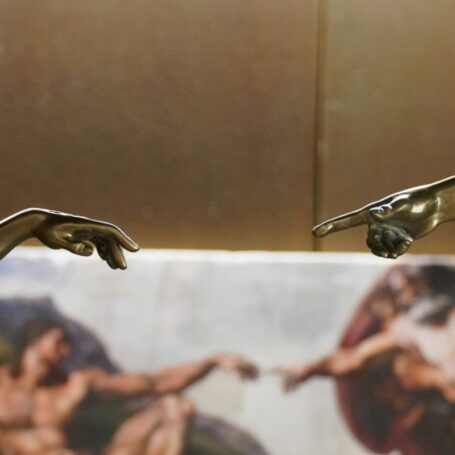Using Racism in the (International) Seminar Room
 Over the last ten years I have encountered a range of racist discourse in the teaching environment – though thankfully never directed at me. This sounds shocking given the liberal-minded university that I work in. Let me explain in a little more detail. Broadly speaking this discourse taken two forms. The first often emanates from international students who inadvertently make inaccurate generalisations based on racial difference that (within a British context) are eye-wateringly inappropriate and, often highly archaic (the student who used 19th century Phrenology in a presentation to highlight the ‘ignorance’ of ‘the blacks’ springs to mind).
Over the last ten years I have encountered a range of racist discourse in the teaching environment – though thankfully never directed at me. This sounds shocking given the liberal-minded university that I work in. Let me explain in a little more detail. Broadly speaking this discourse taken two forms. The first often emanates from international students who inadvertently make inaccurate generalisations based on racial difference that (within a British context) are eye-wateringly inappropriate and, often highly archaic (the student who used 19th century Phrenology in a presentation to highlight the ‘ignorance’ of ‘the blacks’ springs to mind).
The second, is formed within the seminar room, and emanates from British students (irrespective of racial background) towards international students. This often takes a more subtle, insidious form; ignoring ‘foreign’ students or otherwise refusing to work with them because their language skills, confidence issues or unawareness of culturally specific texts and practices are perceived to indicate – once again – a degree of ignorance.
Of course, neither form of racism is acceptable and I actively challenge all forms of prejudice through my pedagogic practice. It is, however, interesting to note the cultural dynamics behind the varying forms of racist discourse. British students (often classing themselves as liberal-minded) are mortified when it is pointed out that their actions have been interpreted as racist. Meanwhile international students are just as ashamed to learn that what they have just summoned up the courage to say in class is considered offensive to the majority in the UK. This cultural dimension also plays out between students: British students can regard the arguments made by international students as racist and ‘backwards’ and international students may identify the actions of British students as racist and ‘insular’.
Outside the seminar room, battles rage on between those who argue for the internationalising of HEI curricula (“our teaching environment is international, our courses should reflect this”), and those who highlight the need to retain a sense of cultural specificity (“we are a British university and international students are choosing to come here because of this”).
At an individual level, I have grappled with the statements for and against internationalising our curricula for some time, while calling time on any form of racism that appears in my seminar room. One could perhaps argue that, in calling time on such discourse, I am myself being racist; imposing my own (middle-class, Left-leaning, bi-racial, queer British) values on these students and ignoring their own cultural background. I would wholeheartedly disagree with this accusation.
Why?
Well because in calling time on racism I seek to critique the actions and statements of all of my students. But in doing so, I am not criticising them as individuals.
Racism is one of those hot potato subjects that people often find difficult to address, not least in a teaching context. This is, I think, because racism is most often experienced and felt at on a personal level. Therefore, and understandably, many assume that in addressing it, one is criticising the owner of the statement or action. In my personal life I have no problem criticising someone for being racist. I personally find racism offensive and I have previously (and vociferously) attacked others for their racism, not matter how inadvertent it may be.
This is in my personal life.
In the context of my professional life, I do not have to resort to the level of the personal in order to respond. Academia provides me with the ideal framework through which I can tackle the inappropriate actions or speech of another without having to attack them as a person. This, I achieve through claim, evidence and critique. In fact, I use precisely the same rhetorical technique in tackling racism in the classroom as I used when preparing my students for essay and presentation-based assessments.
Students are often devastated when I point out that their ‘well-meaning’ statements are in fact highly discriminatory. I could (if I were meaner) find a sense of satisfaction in such devastation. I don’t (often), and I do always urge students who find themselves in such a situation to distance themselves from their ‘faux pas’. In doing so, I ask them to stand apart from it, to examine it using the tools of analysis and critique that form the bedrock of our seminars, and to deconstruct it, play with it, reflect upon it. In doing so, they begin to conceptualise racism through the intellectual paradigms that we address on the course – ideology, mediation, representation, globalisation, hegemony. Let me be clear. This is not an attempt at ‘dampening down’ the fiery intensity of racist discourse. To stick with the flammable metaphor for a second longer, my approach seeks to put the fire out by starving it of oxygen – by starving it of rational argument, by stamping on it with careful reason and evidence.
So, in a perverse way, racist thought and discourse has in fact been a useful and productive aid in my own teaching practice. This is not to say that I would prefer there to be no racism or prejudice in the seminar room – of course I would. I hope for this in the same way that I hope that homophobia, sexism, class-based discrimination and racism did not exist outside of the ivory tower. But using the inaccurate and often unthinking speech and practices of my students as material for teaching them the art of scholarly critique is perhaps the best way of both addressing the racist claim and turning that address into an effective learning tool. It doesn’t always work, and it is a technique that I am still working to perfect, but it is better than criticising students for their racist rants or (worse still) shying away from doing so for fear of offending the offender.
































































































